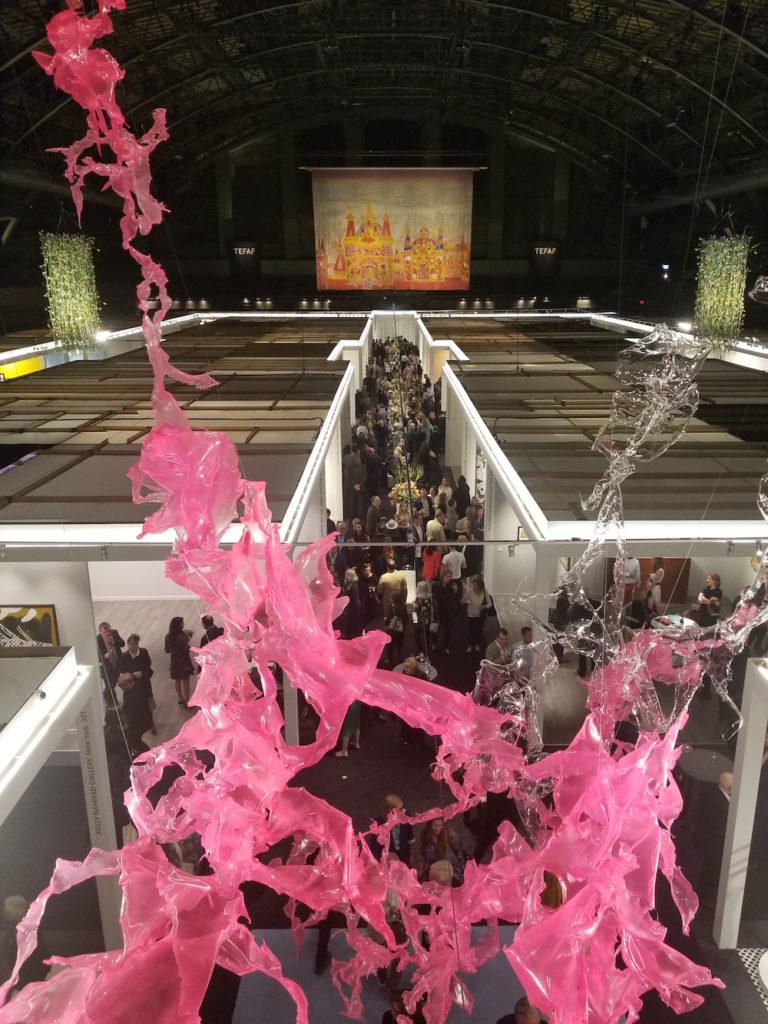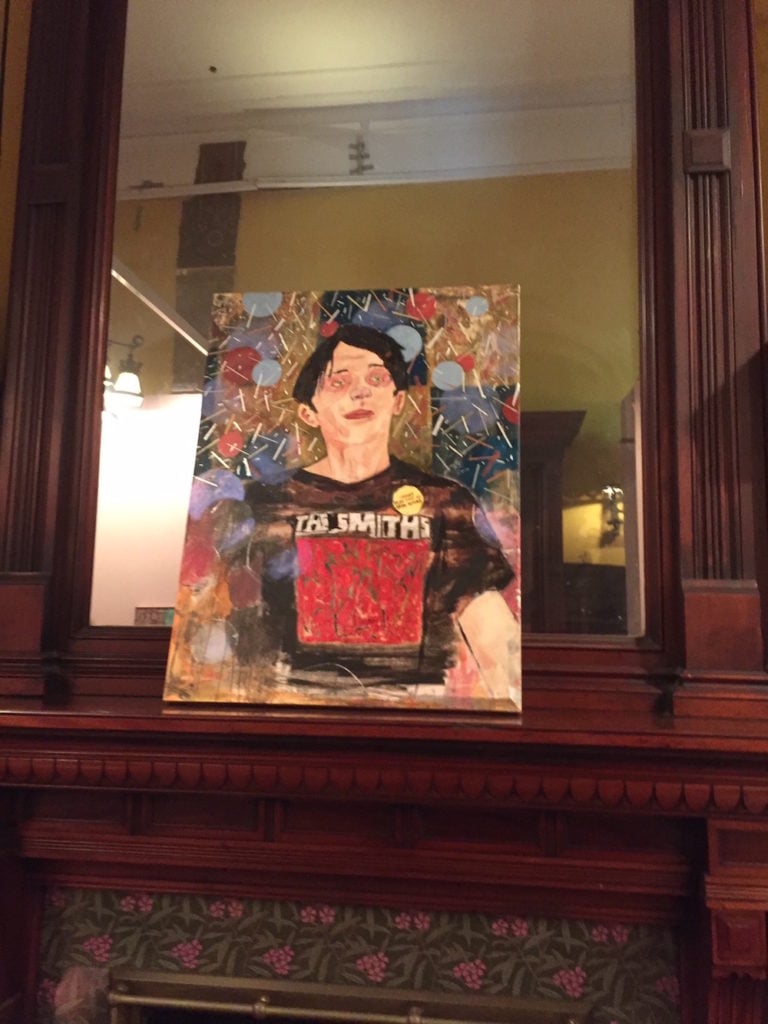Art Fairs
TEFAF’s Spring New York Edition Kicks Off With Eight-Figure Prices, Packed Stands, and a Live Dubuffet Sculpture Performer
Although champagne ran out early, sales stayed solid.

Although champagne ran out early, sales stayed solid.

Eileen Kinsella

The spring edition of the European Fine Art Fair in New York opened its doors to VIPs today with the requisite signs of luxury: oysters, champagne, and copious tulips floating overhead. Also in attendance? A man dressed as a Dubuffet sculpture, hired by Pace Gallery, who was walking around and strolling for photographs with fairgoers (The presentation is an excerpt of Dubuffet’s 1973 performance piece, Coucou Bazar).
Mr. Dubuffet rubbed shoulders with collectors and some celebrities—we spotted Bravo television mogul Andy Cohen, mega-collector and music mogul David Geffen, as well as collectors visiting from out of town including Howard Rachofsky, Don and Mera Rubell, and Ron Pizzuti.
The exhibition space at the Park Avenue Armory on Manhattan’s Upper East Side was, at times, so crowded it was difficult to easily move from booth to booth and get a glimpse of the art. Champagne reportedly ran dry—gasp!—by 5 p.m. But perhaps the early imbibing worked out well for dealers. Sales were brisk, and several said business was better than they had ever experienced at this fair, the three-year-old New York outpost of the established Maastricht-based event.
“I haven’t seen a crowd like this before,” art dealer David Tunick told artnet News amid a crush of visitors in his booth. Soon after the doors opened, he said, he cemented three sales, including two watercolors by Sam Francis and a painting by Paul Klee titled The Singer L. as Fiordiligi (1923). Tunick said prices ranged from the low six figures to mid-seven figures.
First-time TEFAF New York exhibitor Lehmann Maupin presented a stellar solo presentation of new work by Detroit-based painter Hernan Bas, including paintings and sculptures incorporating his signature flamingoes, draped across chairs and a carpet on the floor. An hour into the preview, most of the seven paintings were sold and the few remaining were on reserve, the gallery said. (They declined to cite prices.)
Bas, a solidly mid-career artist, was the exception, rather than the rule, at TEFAF’s spring fair, which is more frequently home to solidly blue-chip Modern art. But gallery co-founder Rachel Lehman told artnet News that she sought out the opportunity to present the artist’s work in an uptown, upmarket context. While the gallery is also exhibiting at Frieze New York this week and occupies a cavernous space on 24th Street in Chelsea, New Yorkers—especially those on the Upper East Side—take kindly when the art comes to them, rather than the other way around.

Installation view of Hernan Bas solo show at Lehmann Maupin for TEFAF New York.
Photo by Eileen Kinsella
Although there were some quick-fire sales at the opening, many of them were likely weeks, if not months, in the works. At a fair like TEFAF, which runs for almost a full week, many collectors prefer to take their time. “TEFAF is very sophisticated,” said Miami-based art advisor Karen Boyer, who is taking clients to both TEFAF and Frieze New York. “You don’t see work flying off the shelves here because the price points are higher.”
One of the biggest-ticket items at the fair was Gauguin’s Tahitian-period painting, Joseph and the Wife of Potiphar (1896), which was on offer for a whopping $20 million, according to ARTnews. A decent number of other works broke the $1 million price point, too, including a 2006 painting by Mark Bradford at White Cube for $2.75 million and Adolph Gottlieb’s Bonac (1961) listed for $6 million at Mnuchin Gallery.
Gallerist Tina Kim presented an eclectic booth at TEFAF, with specially designed curved white velvet walls courtesy of architects Charlap, Hyman & Herrero that made the works pop. Those on offer included pieces by Louise Bourgeois, a painting by Arshile Gorky priced around $400,000, an Alexander Calder mobile for about $1.5 million, and a painting by Dansaekhwa artist Ha Chong-Hyun with an asking price of around $400,000.
This week, Kim has booths at both Frieze New York and TEFAF; she views them as complementary. “TEFAF is more of a lifestyle fair…. Frieze is where you see what’s happening now, where you meet the curators who are really looking for something new. So they’re two very different fairs.”
Similarly, Jacob Twyford, the co-director of Waddington Custot in London, told artnet News the gallery made the decision to do both Frieze and TEFAF last year and returned this year with the same game plan. He described the atmosphere and attendance at TEFAF’s preview as “amazing,” with perhaps a more serious and weighty feel. The gallery brought work by Robert Rauschenberg, Robert Indiana, Joan Miró, and man of the hour Jean Dubuffet. Barry Flanagan’s distinctive rabbit sculptures flanked the booth.
“So far, we have not sold a lot at either fair,” Twyford admitted. “But I’m not dispirited about that at all. There’s a lot to see.”